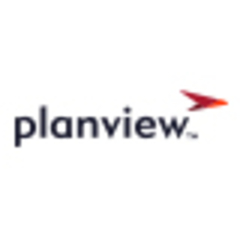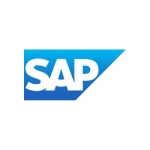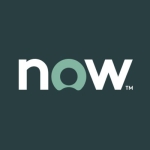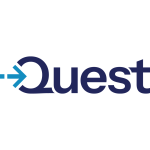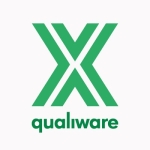What is our primary use case?
We use it for contractor and associate contracting which reflects directly to project resource, "our spend". We do a calculation based on the vendor that the contractor is through, as well as each associate has a per hour rate that is applied to the project to attract the spend applied to that project from the resources.
We also track the number of hours spent per application. Every application in our bank has the application code that we tied back to Planview so that we can track and see how much time is spent within the application, either with upgrades, maintenance or break-fix type of situation and also to report. It's primarily for tracking reporting.
How has it helped my organization?
Enterprise One has improved my organization with the ability to look at the hours that people track. Prior to Enterprise One we didn't have any estimation model. As we grow within Enterprise One, we're able to pull reporting to see how much time it takes for each individual person or a team to perform a task to complete a project. So with that, we're able to start building that model to estimate the approximate number of hours for each task so that when we provide that to project managers, it reduces the amount of time building the project plan because they've already had that base model to use for each of those tasks. It's created our ability to forecast how much time it would take to perform specific tasks that are very similar to each other.
It also improved our communication. Prior to Enterprise One, there was not that much communication between project managers and resource managers. So that when a project manager went out to Microsoft Office or to Microsoft Project to schedule a resource for a task, which they actually didn't, they have to have a separate spreadsheet. They would put down a number of hours and it was just a guess. A resource manager would then come back and say, "They can't do that." It was very back and forth. It wasn't like a synergist, a single point of information where everyone looking at the same thing, it was back and forth. So with a project manager entering just random hours and just guessing to get a specific dollar amount or to fit a specific dollar amount it was a lot of work on the project managers to try to adjust it to fit in with that dollar amount.
Now, with Planview, with them being able to see as soon as the project manager submits a request for some hours, the resource manager can communicate with that project manager instantly and say, "It won't do that. It's not going to take that much time". And then when it comes back where the resource is actually entering the hours on the task, there's an exact number. So it's hard to put a number on how many hours were saved or how accurate it's going to be because we're still growing. But prior to this, the accuracy was really, really off. It was terrible, but now we're getting more and more accurate where we're in the, I would say, closer to 70% accurate on the estimations. So it's getting really close to being very accurate.
Enterprise One helped with the prioritization of projects through alignment with strategic objectives. We use what we call Roadmap, Roadmap items under the planning and capacity section. We're the best at the capacity section. With the Roadmaps, our department heads are able to categorize the project by rank. By ranking those we're able to, especially during this COVID period, we've seen so many projects get pushed down to the bottom or completely removed due to the inability to complete those or the return on investment not being there. It really helped a lot with that planning, investment, and capacity planning.
In terms of the flexibility of configuring assignment, my other administrator and I actually came up with that solution. We decided that was the best way to go primarily because at the state that we are in our company, the project managers weren't mature enough to utilize allocations and the resource managers weren't mature enough to reject or approve those allocations. And that was causing people to be over-allocated because they weren't charging time. Because it the estimation on the number of hours needed was completely off. They were just putting however numbers in there. The resource would show over-utilized 1,300%, 1,300% and it would just throw off all of our reporting.
We cracked down on it. We had people to start utilizing the utilization percentage. Making sure that they had that communication line with the resource manager since we have our estimate as growing. But with the reserve and authorization, being able to authorize an entire team to a specific task and reserve them, allowed us to easily create the schedule that works best for that agile environment. Especially with the specific number of hours used for each person that was really easy to use those types of assignments.
What is most valuable?
We have different groups that use it for different purposes. There are project managers who use it in place of Microsoft Project. So they track their project through its phases, their financials, keeping on schedule, on time, and on budget. Our resource managers use it primarily to track their resources, to see how much capacity their team has to perform different tasks or different projects, and how much time they're spending on each individual application. Technology managers actually represent the overall group who use it to roadmap, outlook, see what's down in the pipeline, what team has what capacity to actually take on a task, see if that project is worth the money, that return on investment is worth actually doing it. Executives are just in it for the reporting to track the financials, to see how much we're spending within the technology and enterprise operations departments. Enterprise One is useful in many ways. We have a little bit under 2,000 people using it.
Another good thing is that we can create custom reports, which is great. If I created a custom report, a tile that tells me how many people have logged in today. We currently have a little under 2,000 users, and that's only users, we actually have integrations, that we created a custom form that sends hours directly to Planview. They're not using Planview directly, but they're sending their hours to Planview through an API. We have over 1,500 contractors overseas and within the United States, that submit their time to Planview, so we can track their work in their project as well. In total, I would say the amount of user input for Planview would be close to 3,000.
Inside Planview, they have what they call a "lifecycle". It's basically a workflow, it's a set of steps that each project has to go through, and with its customization, being able to match our own project process, we match it one for one. And so we can see at each stage of the project where it is either through the gate, from gate zero through gate four, and even with Agile, being able to iterate through that same gate, by using scripted dialogues, or exit scripts, we've been able to track projects exactly where they are. Each schedule can be tied back to either the hours entered, by either date, or a percentage of the effort completed on it, so it ties together pretty good.
It's being used a lot for the remaining effort. We actually create tons of reporting off of it. We've created multiple Power BI dashboards. Data feed allows us to create our custom Power BI dashboards, so that way we can track what efforts been used, what efforts are remaining in a very graphical, easy to read way. We've created this primarily for the project managers and resource managers. My manager has a breakout session that discusses our Power BI dashboards. It's really nifty for tracking that. We use it a lot. Our executive challenged us to be able to forecast and estimate hours used on each task. That's why we implemented Enterprise One initially, but we since provided what she wanted and now we're providing more. Initially, it was just the requirement and now we're exceeding that requirement to give better visibility to all resource managers and project managers.
We have a really large organization, 22,000 associates total, including the 3,000 people using Planview. Being able to group projects into portfolios based on specific filters, either the project manager or any other approver organizational hierarchy, once you set your portfolio, you can either share that with your team or whomever so that they can all be on the same page. With the Power BI dashboards, we have a very open information model where we want everyone to be able to see the same thing. There's only one section where it's confidential and we as administrators have to provision that separately, but everything else is open for everyone else to see. So if you're just a time reporter or just have a reporting, you can go in and see the same information as a manager. Being able to group projects in the portfolios, filter them, and being able to see all of that data graphically using the Power BI or the standard reporting that came with the FastTrack setup has been very helpful to our entire organization.
For all the work that we perform, Enterprise One provides end-to-end work management for the full spectrum of types of work in one tool. We have our technology projects. We have what we call non-technology projects, which are basically projects that don't necessarily have a technology component in it. It's things like branch opening and closures, even though sometimes they will have the technology, but it just depends. We also have what we call OTW, which is another planned work. This is primarily for resource managers so that they can track their applications like how much time is spent on their applications doing upgrades or break-fix. We also have programs of work, another resource manager tool that tracks Agile programs, and we also have Roadmaps. For all the project types that we, or work types that we have within our organization, it does great.
We just started doing the on time and on a budget since we are in infancy with Enterprise One, we weren't really holding the project managers to that. We were holding them to it through the governance, but not through the Enterprise One. Now that we're a little more mature, we've started tracking that grader as well as being able to use those change requests to track as scheduled, budget, or scope changes. It has allowed us to definitely increase our on-time and on-budget awareness.
What needs improvement?
The content management definitely needs to improve. We don't really use content management for projects inside Enterprise One. We have actually switched to a SharePoint site. We have a feed from Enterprise One every night of all the projects that are created. And once they're created, we run our process that goes out to create SharePoint sites for each project. Because of the inability for drag-and-drop file ingestion, the best thing about it is the versioning, but that's also done in SharePoint. We just don't use it because it's HTML and it's hard to use. It's a little bit more cumbersome than it should and then we like.
For how long have I used the solution?
We implemented Enterprise One initially for our pilot group at the end of 2018 and we went into production last year in April.
We have the cloud solution. It's all hosted. The team that is using it, for the most part, is just the technology area, application development, information security does our technology group. We have some enterprise groups also that are using it.
What do I think about the stability of the solution?
We haven't had any issues with stability. In the previous versions, there were interface issues with Internet Explorer because it's just an antiquated browser. With Microsoft adopting Microsoft more of the Edge and Chrome, the stability is fine. We haven't had any issues.
What do I think about the scalability of the solution?
Scalability is great, with the monthly improvement push, they're on a monthly cadence of updates with the new version 18, the improvements come every month. It's awesome. They have a vast library of API calls that we actually have a contractor system. We're actually onboarding that now and we're going to implement API calls to Planview that way. I have created a multiple UiPath robot that used Planview to create reporting, to add users, to do monthly maintenance, as well as the call API to UiPath. I do a lot of robotic process automation and I can do a lot of the automation with Planview. The scalability, being able to integrate with JIRA, Workday, create custom integrations if we need to, being able to use API calls through either JSON or primarily SOAP, is pretty awesome. I don't have any complaints so far on the scalability.
We're looking to integrate JIRA into our Enterprise One with LeanKit. We're still working out the financials on that to try to figure out a way to integrate that either through a flexible license or through individual licensing. Initially, we started off with technology because that was the executive who decides to start tracking the projects since that's where the project management organization lives, under technology. But more and more enterprise business unit groups are starting to want to track time and see what their resources are spending their time on as well. We're growing slowly throughout the rest of the organization. With the amount of data that the Planview provides and that type of reporting, it's kind of giving other departments and other groups visuals into what they could have by using Enterprise One. We're growing through them.
How are customer service and technical support?
Technical support is great. It's just like technical support at any other institution where sometimes you'll get someone who is very adept in the system, and then the others are a little less. But, generally with the way that Planview is set up, if we have any issues, we have a representative we can talk to and bail and get the right people to work on it. We've had no issues.
Which solution did I use previously and why did I switch?
We were previously using a homegrown SharePoint site that we worked with our SharePoint team to build. It didn't have a nearly as robust workflow, reporting approval ability, and tracking as Planview.
How was the initial setup?
In terms of the setup, I actually got hired on in the middle of implementation, but we had a Planview representative on-site performing the configuration. She basically did training while we were there so I was able to pick it up really quickly and become adjusted to building or configuring the system through configuring screens, scripted dialogues, and the lifecycle. It was really easy. It seems like a low-code solution, so it was really easy to pick up.
I would estimate the setup took from July to December. That is when we did the primary build-out of all of the integrations. We had a previous system that was homegrown through SharePoint that we had a lot of projects and data in. We had to do a lot of data manipulation in order to put it in a format that's ingestible by Planview. That took a little while too. I wrote a robot that would automatically convert all of the data over to the new data format, and we were able to send that to Plan B to have them import it.
The big parts of the strategy were just integrations with our financial system. We have a general ledger financial system that we had to integrate with and that we had to send a file over to Plan B to enter that information. We also have a Workday integration for resource management. That is a pretty nifty one where whenever the Workday feed comes over, it either removes resources, adds resources, and creates users based on if they're in a specific hierarchy of the bank. That was really nice.
From our end, it was primarily just me and my teammates working on the deployment. We were the primaries. We actually had one other resource through application development that was helping us. That was primarily for the deal integration. The Workday was just a file feed, and that was all in Planview. My colleague is also a Planview administrator. He doesn't do the robotic automation, but he does a lot of the architecting of the system.
For management, at this point, it's just me and my teammate. We have one other person who is specialized in the reporting. They do a lot of the SQL queries, SSRS, and Power BI setups, but they don't do really much of the administering of the system.
What about the implementation team?
We only worked through Planview. We didn't work with any other third parties.
What was our ROI?
The area with the most ROI is our ICCMO, being able to track that on time and on budget, all of the resource managers. Those are going to be the department heads for each of our technology departments. They would be the ones that would see the most return on investment. As well as tracking their contractors and the hours they're spending on the applications.
What's my experience with pricing, setup cost, and licensing?
The pricing and licensing are fine, but with the model we currently have, we don't have the FLEX license just yet. We actually have the tiered based on the access side from just a team member to project, we call it portfolio manager to admin. The pricing is fine. That was one of the solid points for switching to Planview. There are additional costs for integrations.
Which other solutions did I evaluate?
We actually did an RFP. So we looked at the Gartner quadrants and we had other people provide proposals. But with all the requirements, Planview was the only one that was able to provide all of the items that we needed which is why we went with them.
What other advice do I have?
The biggest lesson learned would be regarding making sure to have Planview do the training. When we did our training for our organization, we did a train the trainer where Planview came in and trained just a few people in our organization and then they went out and trained their people.
But it's like a game where you tell one thing to a person that you pass it down the line and it gets changed by the time it reaches the very end. If you have the budget for it, have Planview perform the training because I think that would increase adoption a lot easier. We had a lot of people who came from different areas that had different methods of tracking projects from Visio Excel and Microsoft Project. Getting everybody on the same page to Planview we had a lot of contention and a lot of people who didn't like the product initially. And that came down to me to training. With the trainer themselves not being very familiar with the system, being unsure about what they're trying to train the other people on didn't give the other associates much confidence in the system initially.
The adoption was a lot slower than we wanted. I think that if Planview had worked to perform the training, it would have made people a lot more of a point of contact to reach out to. And having a lot more acceptance and what they were being taught. So that would be the lesson learned.
Especially if you're an administrator, go through the advanced training if you're doing FastTrack and if you're doing the configuration so that you'll be more familiar with what the consultant is doing. Our consultant was great. She did a lot for us, but we also saw afterward, once we became more familiar with it, we saw a few errors that needed to be corrected but they were easy and we were able to fix them ourselves. If you don't go through advanced training, you wouldn't recognize it.
I would rate Planview Enterprise One a nine and a half out of ten because nothing is perfect.
Which deployment model are you using for this solution?
Private Cloud
Disclosure: My company does not have a business relationship with this vendor other than being a customer.

